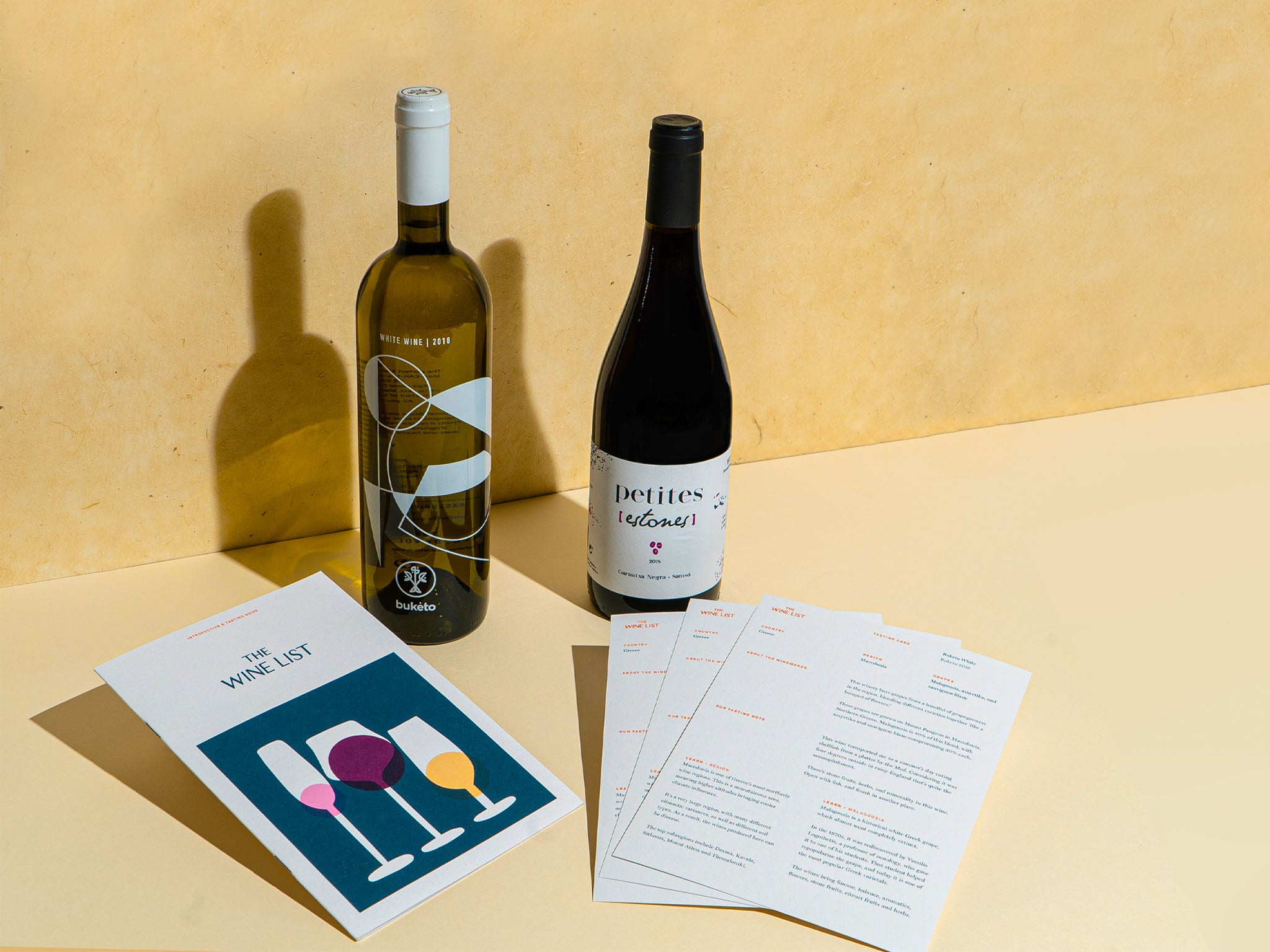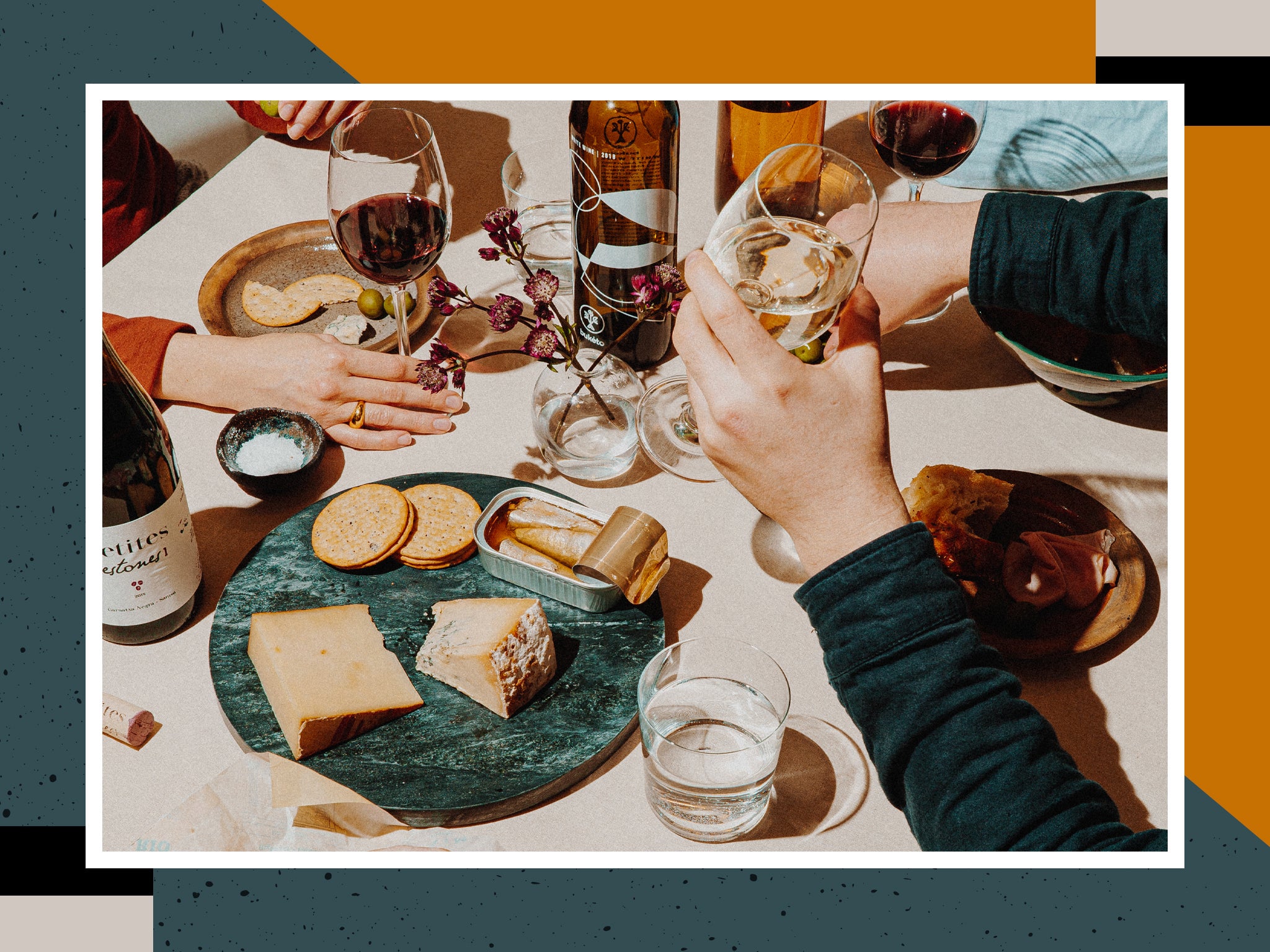Wine List subscription box

Buy now £39 (or less with the code “Independent”), Thewinelist.net
This is where Wine List comes in: founder Josh Lachkovic is shaking things up in the world of wine education. The start-up is aiming to disrupt the status quo with a subscription that delivers you monthly wine lessons alongside bottles to taste.
The aim is to encourage would-be wine connoisseurs, by making learning accessible, fun and interesting. So after six or 12 months, you’ll know just by looking at a wine list how they’re likely to taste like.
I tested the March subscription box to see if I could learn a little more about wine from the comfort of my own home... and while drinking it. With each delivery, you choose between two, six and 12 bottles. I received a white and a red along with a booklet and a tasting card for each.
Subscriptions start from £39 for two bottles, £99 for a case and £195 for 12. You can change between the different subscriptions each month, so you’re not wedded to 12 bottles, or just two, every time. If you think just under £40 might seem a lot for two bottles, remember that the wines are from independent makers and you won’t find them on the shelves of your local supermarket.
And if you need a little more encouragement, if you use the code “Independent” you’ll also benefit from three discounted months; the first with 40 per cent off, the second with 30 per cent off and the third with 20 per cent off.
Read more: 10 best albarino wines perfect for picnics and parties
And, of course, you’re getting much more than just the wine, as each month you’re learning about the drinks through the 12-part course, Wine Roots. It’s been designed to help you understand the fundamentals. Each month you’ll learn something new, including how the climate, skins, vessels and terroir affect the taste. For the first month, it’s all about how to taste.
Split into four sections, the first box teaches you to look, smell, taste and think. It might sound simple, but it breaks down what to look for so you’ll finally understand why you see serious wine-tasters swill their glasses before sticking their noses in and then going in for the all-important slurp. The information is broken down into easily digestible bites over just six pages. There are not reams of course notes to highlight and revise – just easy-to-read, clear information.
The taste cards are very detailed, and really made me think about what I was drinking. For each characteristic of the wine, from the acidity to the finish, there’s a sliding scale to mark depending on your thoughts. For the aroma profile, there are charts encouraging you to tick everything you can taste or smell, from liquorice to lime. If it’s not something you’re used to doing, it really gets the cogs going. I also found that completing it with someone else helped, as they noticed some things I didn’t.
Read more: These £7 tablets helped me to run my fastest 5k in months
Each card also includes information on the region, similar wines to try, what to pair it with and trivia. What I liked best was the winemaker’s story – Rui, who makes the white wine I tried, is moving towards a more organic model and plans to get sheep to manage the grass between the vines. I felt this connected me to the producer and made me appreciate the work and thought that goes into the drink.
First up is the white: Quinta da Ribeirinha’s vale de lobos reserva white 2018. I’ve only in the past year or so rekindled my love of white wine, after many years as a teenager and young twentysomething buying awful, cheap varieties. But more recently my go-to has been viognier – a full-bodied and fruity French grape known for its notes of peach and honeysuckle.
My initial thoughts were that the reserva is a much darker yellow than I usually drink when it comes to whites. It looked like a well-oaked chardonnay. In reality, it’s a mixture of four grapes: sauvignon blanc, verdelho, chardonnay and gewurztraminer. Taste-wise, it was light and fruity with notes of lychee and creaminess; a smooth, full-bodied and easy-to-drink wine that I’d happily buy again. Even my partner – who insists he doesn’t like white wine anymore – drank his glass quicker than me.
The red I received was a reun 2018 from the Augo family estate in Bulgaria. What first struck me about this was that Bulgaria is not a country I’d usually associate with wine, although I knew about other eastern European wine-producing countries. But after reading the notes, I was put to shame – this family vineyard has been going since 1897. From the colour, I thought it looked like pinot noir, which I’m not a huge fan of. After tasting it, I was pleasantly surprised to find it a light-bodied red with a long, velvety finish and notes of plum and raisin. It is a great wine that I found easy to drink.
Two successes to add to my list – and finally, courtesy of reading the short booklet, I’ve understood more about what I’m looking for than I have from any wine tasting or restaurant sommelier description.
